By:
- Michelle Brubaker
Published Date
By:
- Michelle Brubaker
Share This:
Every Second Counts: A Day in the Trauma Center
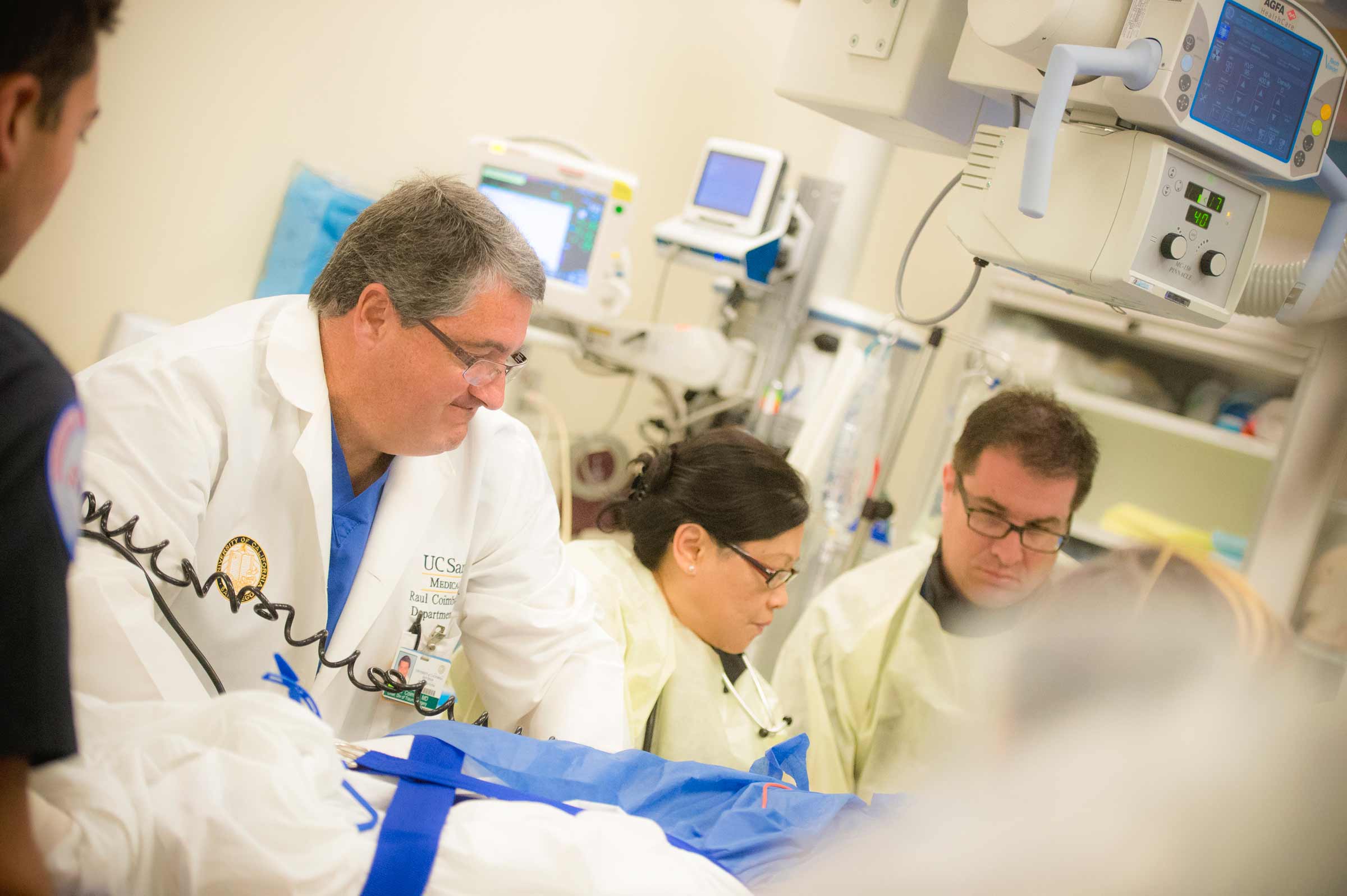
Photos by Erik Jepsen/UC San Diego Publications
It’s 10 o’clock on a Tuesday morning and the UC San Diego Health System Level-1 Trauma Center is quiet. The only sounds are beeps and tones from machines monitoring the health and status of a handful of patients, the subdued bustle of staff tending to their work and family members visiting their sick or injured loved ones in the adjacent Surgical Intensive Care Unit.
Then, suddenly, a page sounds: A new trauma patient is en route. With trained, almost automatic response, trauma nurses, residents, fellows and surgeons move into position at the trauma resuscitation bay unit. When paramedics arrive with the patient, every second will count.
Seven trauma team members stand around a steel table, all with specific roles. With advanced technology and verbal communication with paramedics on scene, the trauma team is prepared and ready to execute a treatment plan before the patient is even in the hospital.
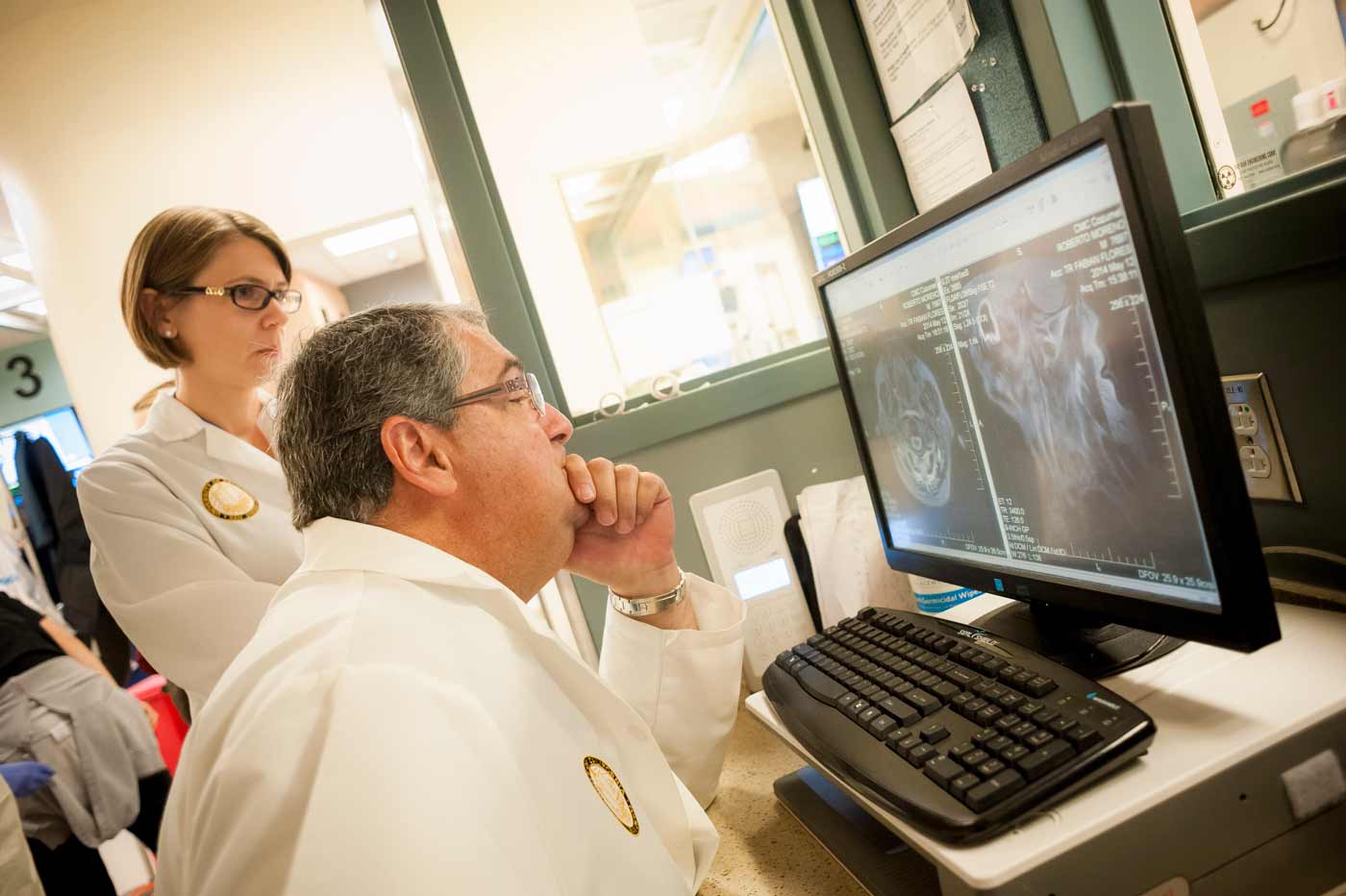
Center, Dr. Raul Coimbra
“We are always in a state of readiness,” said Dr. Raul Coimbra, new surgeon in chief at UC San Diego Medical Center – Hillcrest and chief of the division of Trauma, Burn, Surgical Critical Care and Acute Care Surgery at UC San Diego Health System. “Each second we effectively save with one patient, will be used to treat the next, making for a stronger workflow and collaboration with trauma surgeons and achieving the ultimate goal of improved patient care and survival rates.” The doors open. Paramedics roll the patient into the trauma resuscitation area. Trauma team members take over. If you are envisioning a chaotic scene from the television show “Grey’s Anatomy,” think again. The team calmly and efficiently assesses the patient, a male who fell and severely injured himself while vacationing in Mexico.
More than 3,200 patients are admitted to the trauma center each year. Trauma surgeons treat injuries that include not just injuries from falls, but the consequences of motor vehicle accidents, assaults, gunshot and stab wounds and burns.
UC San Diego Health System’s trauma center is one of only four in the nation where trauma patients are treated in a free-standing trauma center not located within the emergency room, as trauma patients require a highly specialized medical team with a unique skill set.
“Trauma patients come directly to the trauma center for the most critical care, bypassing the emergency department,” said Coimbra. “There is a dedicated trauma team that cares for this population from the time they are admitted until discharge from the hospital.”
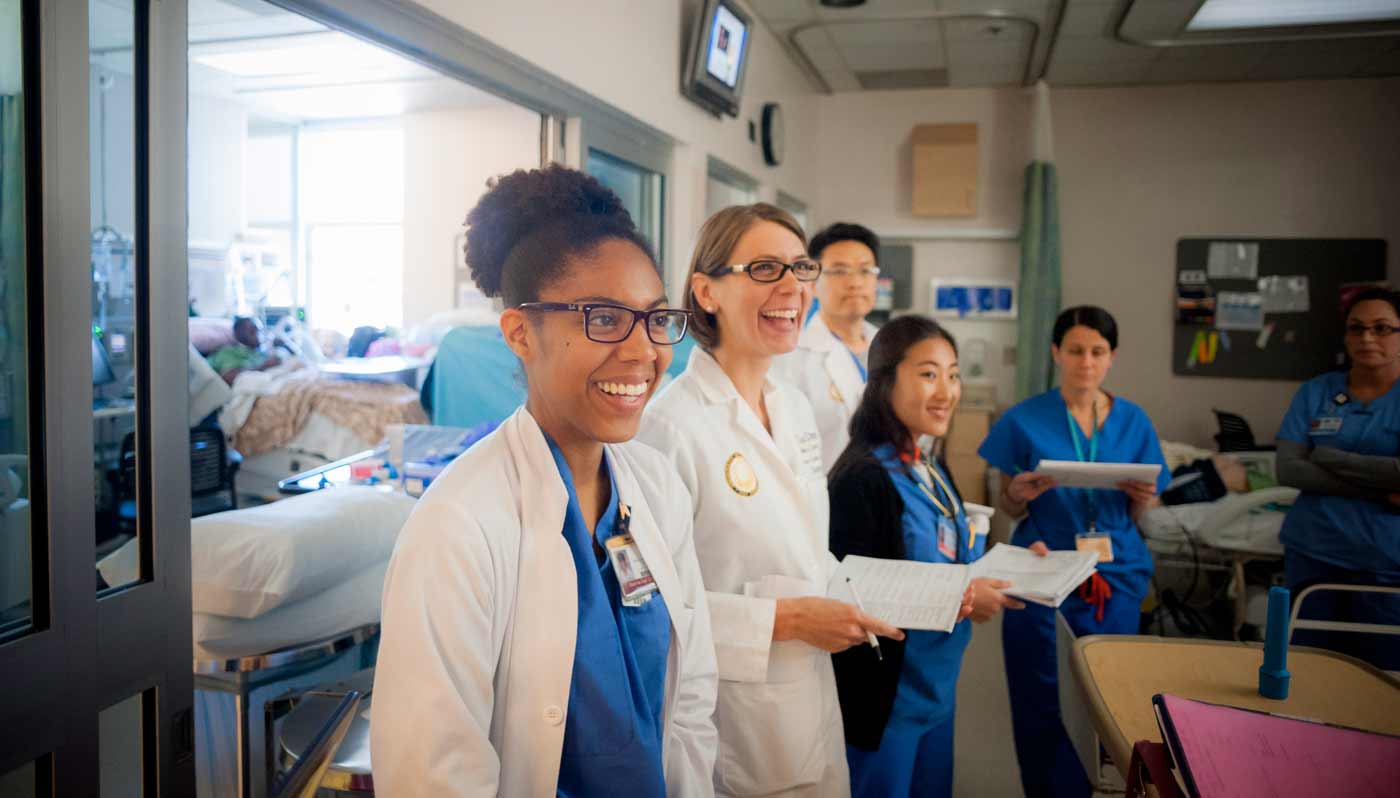
In the resuscitation bay, the trauma team is trying to determine if the patient is alert and has sensation in his lower extremities.
“Do you know what date it is?” asks Samuel Han, a physician resident at UC San Diego Health System. “Can you wiggle your toes?”
Although the first voice the patient hears is Han’s, Coimbra is the silent, driving force behind the trauma team. With more than 25 years of experience as a trauma surgeon, Coimbra has been instrumental in leading one of the most successful divisions within the Department of Surgery at UC San Diego Health System. He has played a significant role in developing the region’s first Level-1 Trauma Center into one of the top programs in the nation, as well as a model for trauma centers around the world.
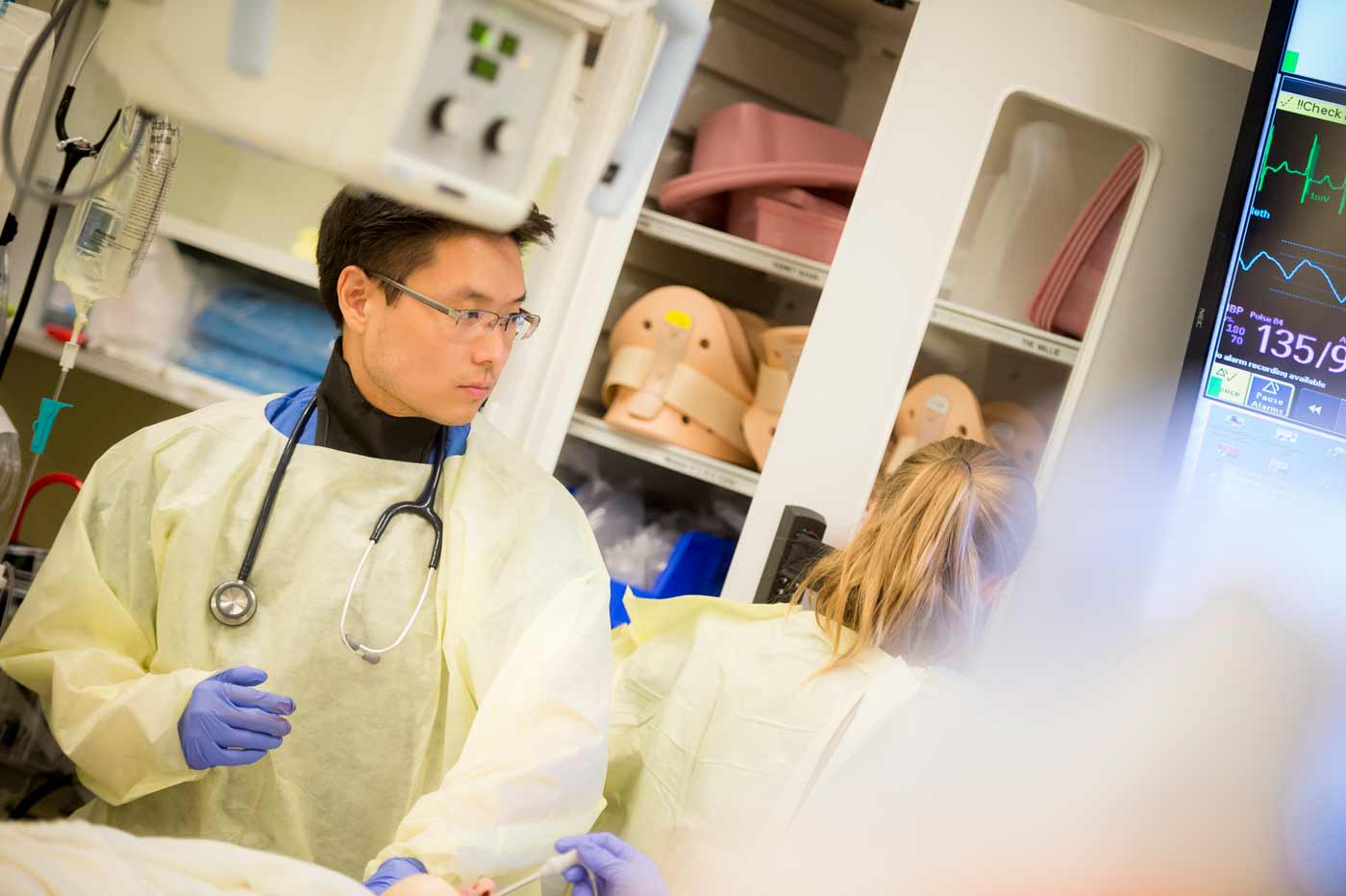
Samuel Han
With fewer than 8 percent of hospitals in the United States having a trauma center, Coimbra also has been instrumental in positioning San Diego’s Trauma System, a collaboration of six hospitals in the county, as the standard of trauma care. The trauma system celebrates its 30th anniversary this year.
In his new role as surgeon in chief at UC San Diego Medical Center – Hillcrest, Coimbra will oversee long-term strategic goals that will continue to put patients first by delivering world-class programs and care. He will also remain a mentor to students, fellows and residents. Coimbra embeds himself when necessary and is intimately involved in the teaching process, asking his staff questions that motivate them and provoke innovative treatment approaches.
“As the only academic hospital in San Diego, we are different in how our system operates,” he said. “The patient is getting the highest quality of care with a comprehensive team whose sole purpose is to save lives. It is an honor to train the next generation of trauma surgeons.”
Coimbra orders a CT scan of the newest trauma patient, one that will provide a closer look at a fracture located in his neck. Once the patient is sent to radiology, Coimbra and the team meet in a conference room to review X-rays of other patients in the Surgical Intensive Care Unit (SICU). The age of patients in the SICU ranges from 19 to 85, each with different types of severe injury.
Coimbra employs the roundtable discussion as a teaching opportunity, presenting new approaches, asking the team to define specific medical terms and empowering them to critically think about each patient’s condition and treatment plan.
“I have learned so much from Dr. Coimbra about what it means to be a trauma surgeon,” said Han. “I have grown professionally and personally under his leadership.”
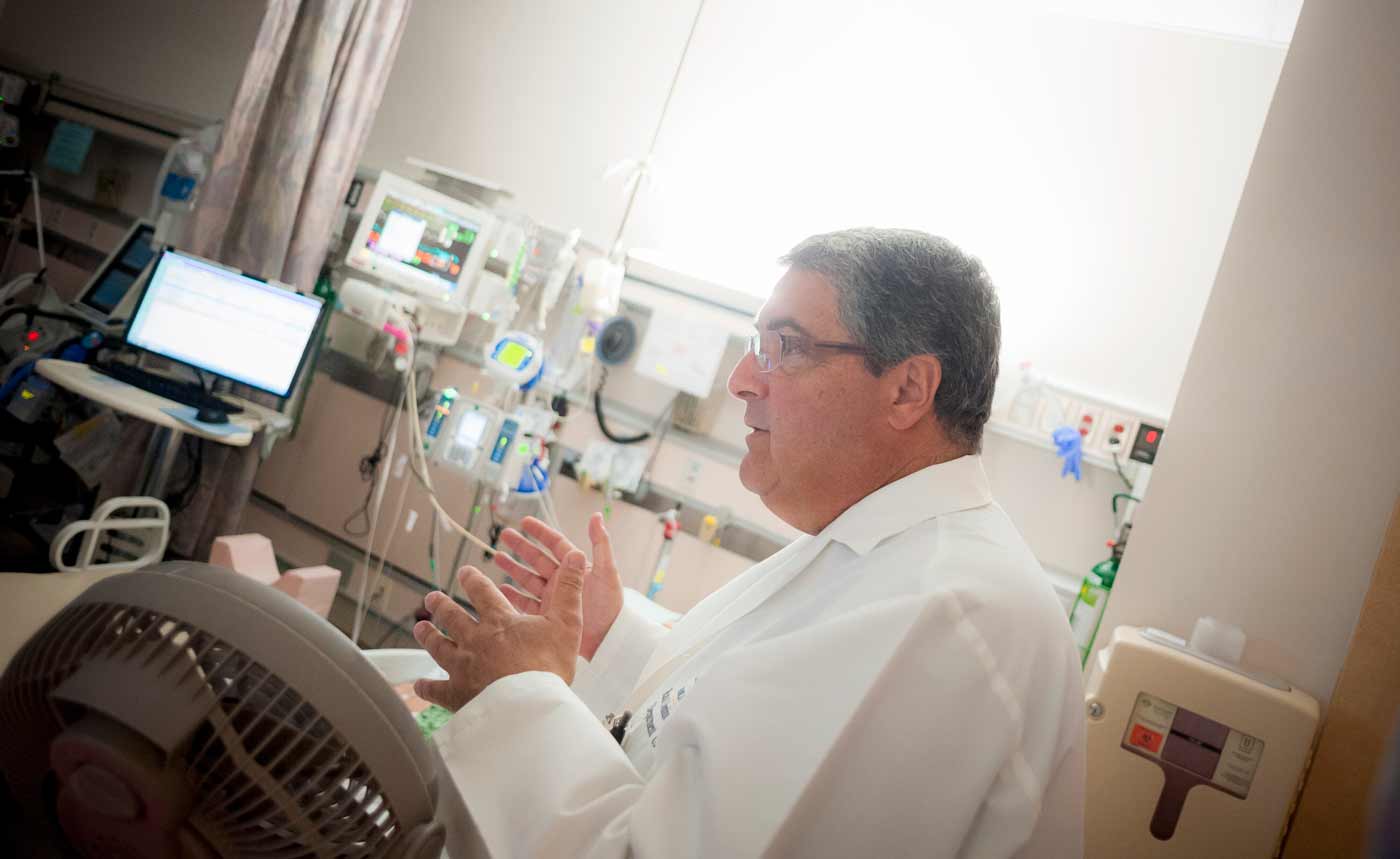
During the discussion of a patient who was deemed non-survivable, a lullaby plays overhead, indicating that a baby has just been born at UC San Diego Health System. It’s an ironic reminder that as one life is ending, another is beginning.
After each patient’s imaging has been reviewed, the team attends “rounds,” a group visit to each patient during which changes and improvements in treatment are considered and implemented. As the trauma team begins to review the chart of the first patient, there is cheering a few rooms down. A man has walked again for the first time since he was admitted 51 days earlier after almost drowning.
“We consider this patient to be the save-of-the-year,” said Coimbra. “His next big milestone will be to go outside and enjoy the sunshine, which can be very healing.”
Coimbra is passionate about spreading the message that the most effective measure against a traumatic injury is prevention, and the UC San Diego Health System trauma team conducts and uses ongoing research to implement programs regionally shown to reduce the mortality rate from traumatic injuries.
In the middle of rounds, another page is sent to the team, indicating an 87-year-old patient is on his way after a fall. The process starts anew.
“What I love about my job is the unknown. We are dealing with injuries from head to toe, and when we get the call that a trauma patient is coming, we jump into action and figure out the most effective way to successfully get the job done,” said Coimbra.
Go to the UC San Diego Health System trauma center website to learn more.
Share This:
You May Also Like
Stay in the Know
Keep up with all the latest from UC San Diego. Subscribe to the newsletter today.



